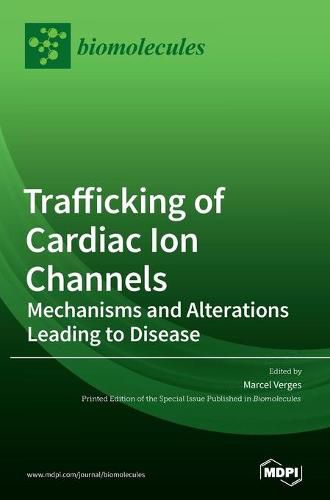Readings Newsletter
Become a Readings Member to make your shopping experience even easier.
Sign in or sign up for free!
You’re not far away from qualifying for FREE standard shipping within Australia
You’ve qualified for FREE standard shipping within Australia
The cart is loading…






This title is printed to order. This book may have been self-published. If so, we cannot guarantee the quality of the content. In the main most books will have gone through the editing process however some may not. We therefore suggest that you be aware of this before ordering this book. If in doubt check either the author or publisher’s details as we are unable to accept any returns unless they are faulty. Please contact us if you have any questions.
Protein sorting and trafficking are regulated by well-conserved mechanisms. These allow a distinctive set of resident proteins to be present in the correct subcellular organelle, which is required for proper cell functioning. Voltage-gated ion channels, as responsible for cardiomyocyte action potential, must be properly localized. They participate in cell excitability and electrical coupling, ensuring uninterrupted and rhythmic heart beating. Ion channel complexes comprise one or more pore-forming
subunits, associated
subunits, and additional proteins. Channel localization and function are regulated by the
subunits and associated proteins, such as cytoskeletal elements, cell-adhesion molecules, and adaptors. These influence protein targeting, anchoring, and retention in specific surface domains along the cardiomyocyte sarcolemma, such as intercalated discs, T-tubules, or the lateral membrane. Alterations in ion channel trafficking are the cause of channelopathies associated with inherited arrhythmias leading to sudden death. An outstanding question is how these molecular alterations lead to disease. In this volume, scientists share their vision to understand how cardiac ion channel trafficking is regulated and how it may become altered, leading to channelopathies that often turn into deadly arrhythmias. Data generated can be translated to a clinical context, hopefully turning into approaches to help prevention and treatment, which is of utmost importance, both medically and socially.
$9.00 standard shipping within Australia
FREE standard shipping within Australia for orders over $100.00
Express & International shipping calculated at checkout
This title is printed to order. This book may have been self-published. If so, we cannot guarantee the quality of the content. In the main most books will have gone through the editing process however some may not. We therefore suggest that you be aware of this before ordering this book. If in doubt check either the author or publisher’s details as we are unable to accept any returns unless they are faulty. Please contact us if you have any questions.
Protein sorting and trafficking are regulated by well-conserved mechanisms. These allow a distinctive set of resident proteins to be present in the correct subcellular organelle, which is required for proper cell functioning. Voltage-gated ion channels, as responsible for cardiomyocyte action potential, must be properly localized. They participate in cell excitability and electrical coupling, ensuring uninterrupted and rhythmic heart beating. Ion channel complexes comprise one or more pore-forming
subunits, associated
subunits, and additional proteins. Channel localization and function are regulated by the
subunits and associated proteins, such as cytoskeletal elements, cell-adhesion molecules, and adaptors. These influence protein targeting, anchoring, and retention in specific surface domains along the cardiomyocyte sarcolemma, such as intercalated discs, T-tubules, or the lateral membrane. Alterations in ion channel trafficking are the cause of channelopathies associated with inherited arrhythmias leading to sudden death. An outstanding question is how these molecular alterations lead to disease. In this volume, scientists share their vision to understand how cardiac ion channel trafficking is regulated and how it may become altered, leading to channelopathies that often turn into deadly arrhythmias. Data generated can be translated to a clinical context, hopefully turning into approaches to help prevention and treatment, which is of utmost importance, both medically and socially.